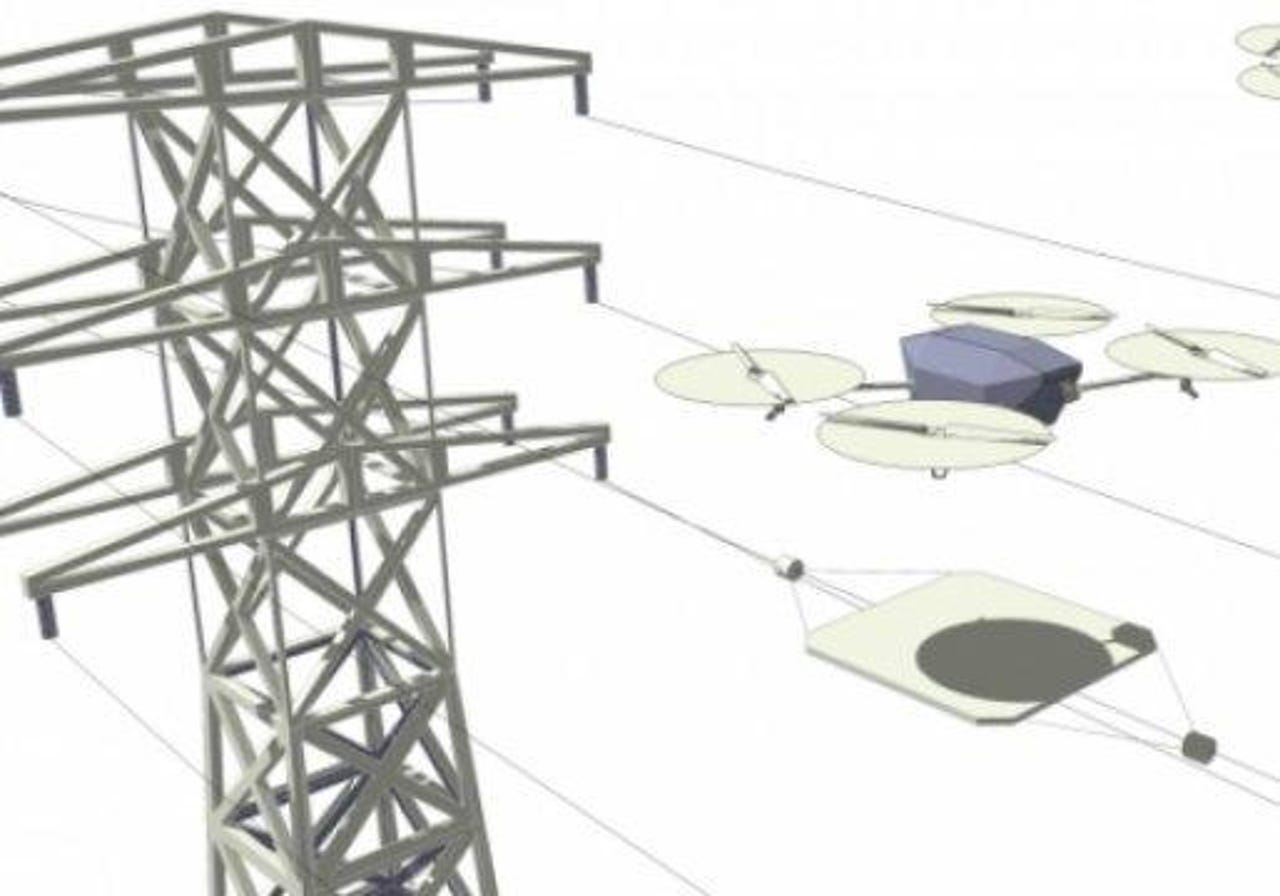Watch this drone charge without landing


Image: Imperial College London
Drones vary in size, performance, and durability, but one spec that is woefully standard is short battery life. Sure, some military and research UAVs can stay in the air long enough to travel thousands of miles, but they are much too large, stiff, and expensive for most recreational or commercial purposes.
Most popular quadcopters can only fly for about 20 minutes before they need to be recharged. Now, scientists at Imperial College London have demonstrated a potential solution, with a system that enables a drone to wirelessly charge by hovering over a transmitter.
Although this is an exciting breakthrough that could eliminate many headaches and expand the possibilities for drones, the basic technology is more than a century old. The charging system uses inductive coupling, which involves transferring energy between two devices via an invisible electromagnetic field. It's the same method that is used for electronic toothbrushes, wireless cell phone chargers, and the experimental roads that wirelessly charge electronic vehicles.
The team at Imperial College London used an off-the-shelf quadcopter to demonstrate how aerial inductive charging could work. They hacked the drone's electronics, removed its battery, and attached a copper foil ring to the drone to serve as an antenna.
The second half off the system involves a transmitter made from a circuit board that is connected to electronics and a power source. The drone's electronics are tuned to the same frequency of the transmitter's magnetic field. When the drone flies into this field, its electronics convert the alternating current (AC) voltage into a direct current (DC) voltage, thus transferring energy from the power source on the ground into the drone.
This technology is still in the early experimental stage, and there are a few drawbacks that could be deal breakers. The drone can only currently fly ten centimeters above the transmitter, so this isn't a practical solution, at least in the current iteration. Even if the distance is significantly improved, induction charging is usually quite slow, so for many scenarios, it will make more sense to just land the drone and quickly charge it the old-fashioned way.
Still, the researchers say they are only approximately one year away from a commercially available product, and they suggest that a vehicle could be used as a mobile charging station for drones. This would be a slight improvement over the method that Workhorse is piloting to charge its delivery drones by docking them in companion trucks.
Beyond extending flight times for drones, this charging method is exciting because it can be used in the reverse direction. Drones could deliver power to hard-to-reach devices, such as sensors on bridges and towers, or even scientific equipment in outer space.